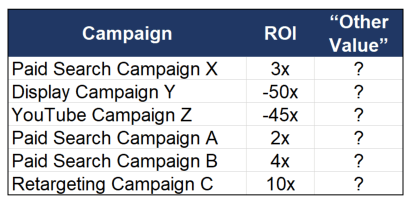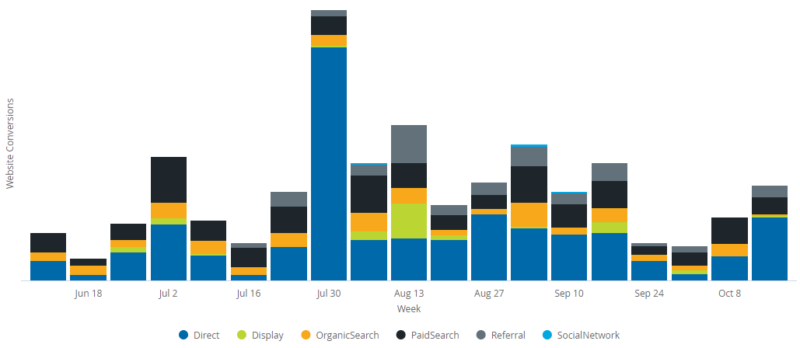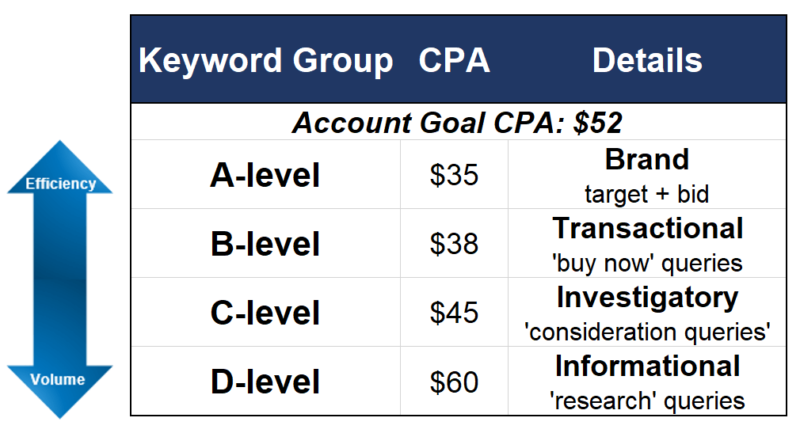Improve paid search results through routine, scheduled maintenance
Just as you schedule campaigns, creating a cadence to evaluate channel strategies is vital to improving paid search results.

Search practitioners too often get caught up in the day-to-day optimization and don’t pay enough attention to the bigger picture. Keyword sweeps, bid/budget tweaks, and ad/audience refreshes can chew up the calendar, resulting in less time auditing the big questions that connect back to overall business objectives. If you only evaluate strategy when performance tanks, it’s high time for a little reprioritization. Just as you schedule campaigns, creating a cadence to evaluate channel strategies is vital to improving paid search results.
Let’s examine three areas of focus that are ripe for routine, scheduled maintenance.
1. Assessing paid vs. organic strategy
Cadence: Bi-annually
Questions to solve:
- What is the true value of a brand campaign for our business?
- Should we be running brand campaigns?
If paid and organic programs are not intertwined, change that immediately. It’s essential that these are managed as integrated as possible in the marketing mix. Unfortunately for many organizations, SEO and Paid Search channels, data, and teams operate in silos and aren’t considered congruently. The PPC team bids on brand terms and adjusts budgets and bids based on performance to scale the already stellar conversion rates while the SEO team complains about the decline in traffic and conversions. Sound familiar?
There are many reasons for executing and maintaining a paid search brand campaign: competition, promotional highlights, messaging control, expanded SERP real estate, audience building, etc. And for every brand campaign advocate, there’s a protester questioning what if brand terms organically rank high and competition is low? There’s no quick answer, but investing time and energy into testing theories will open a longer-term path to quantify how an ad placed where organic dominates decreases or increases your ability to convert. Testing organic lift with, and without, paid brand efforts can lead to additional and more granular parameters. Deeper insight can pave the way to ROI-improving automation tactics, such as only running brand campaigns when competition exists in the SERPs and organic ranks > X, or when paid search ROI is < X.
To run (or not run) paid brand efforts must be a team decision taking all imperative paid, organic and revenue data into account. It’s essential to make sure stakeholders understand that while Paid Search ROI may appear to take a hit, overall business ROI is forecasted to increase by X% and/or funds can be reallocated to additional expansion opportunities.
2. Testing attribution models: How paid search efforts fit within the overall channel mix
Cadence: Quarterly, or at new milestone such as product launches, or when new channels or customer journeys are introduced.
Questions to solve:
- What value does paid search bring to the buyer’s journey? To the organization?
- How do individual channels/ad types/network impressions influence or impact conversions?
- How do paid efforts influence organic and direct search? How do they influence other channel engagement?
Digital marketing attribution is as misrepresented as it is complex in most organizations. Multiple user touchpoints, cross-channel integration, metrics, funnels, sales cycles and customer journeys present challenges for stakeholders to best comprehend the value of a campaign or channel. Of course, many default to last click attribution because it’s the easiest for high-level consumption and we PPC managers have egos that we like to protect. The problem is, this myopic approach is detrimental at the channel and business level. Applying only one model illuminates a fraction of a customer’s complete path and sources of revenue, which often leads to eliminating campaigns or strategies that drive conversion (and ROI). Proper attribution modeling involves testing models that allow you to prove the ‘other value’ and the ‘true value’ of your efforts.
Now that we understand the importance of attribution models for a business, we can evaluate which type of attribution models are best for your organization. Do you use channel models? Analytics platforms? Third party tools? The answers to these questions can be unique to any industry or organization. A good starting point is determining whether the organization’s goal is scale or efficiency. With that mindset, zoom in on single-touch vs multi-touch attribution modeling. Single-touch attribution models include first-touch or last-touch models, which can be beneficial if you’re only looking to maximize top of funnel (growth) or last-click impact (efficiency). In reality, last-click has blind spots and doesn’t take into account other pre-conversion touchpoints. Because of this, Google is looking to kick last-click to the curb anyway, so it would behoove many businesses to remove this from their vocabulary.
Multi-touch can provide far greater insight. Linear, data-driven, position-based, weighted, time decay and algorithmic attribution models are inherently less focused specifically on direct response, so they help uncover value from a branding and customer value perspective.
Choosing the right attribution models for your organization should be an iterative process. In many cases, multiple models are used to answer various attribution questions. Once your organization adopts attribution or a particular model, you use this data to optimize from the top down. From budget allocation to bid management, your optimizations will be fed with attribution-backed data. The good news is it’s never too late to experiment. Trial-and-error testing of multiple attribution models and metrics will ultimately drive informed investment decisions. At Aimclear, we’ve seen how finding the ‘right’ model can yield exponential budget increases, because the value is much more evident, which is good for CMOs and paid search managers alike.
3. Assessing scalability of paid search accounts
Cadence: Monthly, Quarterly, Annually
Questions to solve:
- Do current paid search campaign structures support scale and growth?
- Can we maintain (or improve) ROI with scale?
- Do structures align with goals?
The structure of paid search accounts, campaigns, and ad groups are paramount when evaluating the attainable in-channel growth without sacrificing ROI. As long as Google is in business, the opportunity for expansion (aka spending more $$) will exist. Anyone can funnel new keywords or networks in the mix to increase volume, but scaling strategically and predictably to aid backend performance will keep the search team in high esteem among stakeholders.
Taking a step back with the PPC teams and stakeholders to align on overall goals and KPIs will be the first step toward ensuring your structures can support growth. Do goals support CPA? MQL rates? ROAS? Pipeline? Agreement (or re-agreement) of goals will help define strategy and investment for the next move.
In B2B industries, conversations during this evaluation period can create division between sales and marketing, because roles and responsibilities can get redefined. This can lead to marketing teams being left to front-end metrics and goals as they perhaps shouldn’t be held responsible for what happens once the sales team takes over. It’s important to note that whether marketing has any role in the outcome once a lead hits the sales teams, marketing still HAS influence (think pre-conversion, nurturing, retargeting). More notably, if you remove down-funnel business metrics from the search team’s reach, they can’t do their job as effectively. CPA at least includes initial investment, but what about when there are multiple products at different sales cycles and margins? With back-end metrics as part of the equation, higher CPAs may become more acceptable with scale in certain areas, given product or category ROI against overall ROI.
Once goals have been communicated, the search team’s strategy for maximizing the efficient spend capacity comes into play. Efficient spend capacity is essentially the amount of budget an account or keyword set can spend given a specific CPA goal. Assessing keyword groups by comparable CPAs will make it easier to track contribution to KPIs. We find that grouping keywords into “A”, “B”, “C”, and “D”-level aids in identifying how and where scale exists.
Grouping keywords make it easier to funnel budget through keywords providing the lowest CPAs/highest ROI. Though it would be the dream for budgets to be exhausted and scaled through these areas, you’ll often find volume caps among these sets. C- and D-level discovery keywords can be then introduced and optimized to continue scaling until a diminishing return can be observed. Understanding the capabilities around efficient spend capacity is powerful when explaining the relationship between budget spend and efficiency in accounts, as account growth is essentially an increase in efficient spend capacity.
Finally, evaluating the actual structuring or segmentation of campaigns is critical regarding ROI improvements. Highly segmented campaigns can bring benefits to personalization, but they generally do not allow for sufficient data to flow through. Ultimately, search teams have to decide whether to chase less informed performance for a shorter period, versus making fewer decisions over a longer period while data aggregates. In competitive or volatile industries patience for the long game can be thin, and can also leave companies at a disadvantage.
At the highest level, make sure ad groups, campaigns, and accounts are structured in a manner that supports goals, budgets and scale. The more data that can pass through the campaigns results in smarter outcomes from PPC teams and channel optimization algorithms.
Reevaluating and challenging the status quo is not always easy, but it is imperative to fostering innovation and continued growth. You may find that after a few scheduled reviews, changes required may diminish. But set a cadence to continue evaluating your programs in their entirety and keep to the schedule. Setting aside time to revisit approaches is half the battle at large organizations, and can help teams question how and where improvements can be made in a more structured manner.
Contributing authors are invited to create content for Search Engine Land and are chosen for their expertise and contribution to the search community. Our contributors work under the oversight of the editorial staff and contributions are checked for quality and relevance to our readers. The opinions they express are their own.
Related stories
New on Search Engine Land



